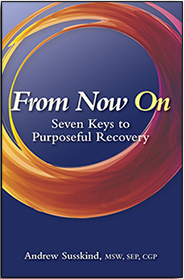Shame is epidemic, but that’s not always a bad thing. Shame is one of your primary emotions and part of the human condition, but it can be paralyzing and profoundly isolating if not explored and processed. It often shows up in the self-attacking language you sometimes use against yourself such as:
I’m not good enough.
I’m a bad person.
I don’t like myself.
There is something wrong with me.
My feelings are too much for others.
Through her research, professor, author and storyteller Brene Brown developed the term shame resiliency which implies that shame doesn’t fully go away but instead we learn to live with it and find ways to minimize its effects. She goes on to say that “shame is given to us by others and shame is healed through others”. And that is what we’ll be exploring in this month’s blog.
I’ve been leading therapy groups since 1992, and one of the many benefits of group therapy is feeling less alone. My groups generally have seven people in them, and they are constantly giving each other honest feedback—sometimes warm and fuzzy and at other times, not so easy to receive. What is apparent over time is that they build respect and trust for one another which often is a contrast to their families of origin. When you were growing up, how many of you had your feelings ignored or didn’t feel safe enough to express them openly? How many of you were bullied or humiliated in school or in your neighborhoods? Shame messages start early and penetrate deeply.
But healing is possible. For example, group therapy provides a reparative experience, and even group members with the deepest level of shame generally feel relief as they realize they are not alone and others truly care about them—sometimes a rare experience for those who go through life with the invisible suffering associated with shame.
Remember that there can also be healthy shame. Take the example of a recovering alcoholic who grew up in a family with little or no boundaries. As an adult, he talks loudly and doesn’t seem to listen to others. In order to understand that he creates distance from others, a close friend had to sit him down to let him know how he unintentionally pushes others away. To correct his behavior, he needed to feel some level of shame which became a catalyst for him to reset his boundaries—in this case how he communicated in face to face conversation.
In Part 2 we will explore specific action steps toward building shame resiliency




